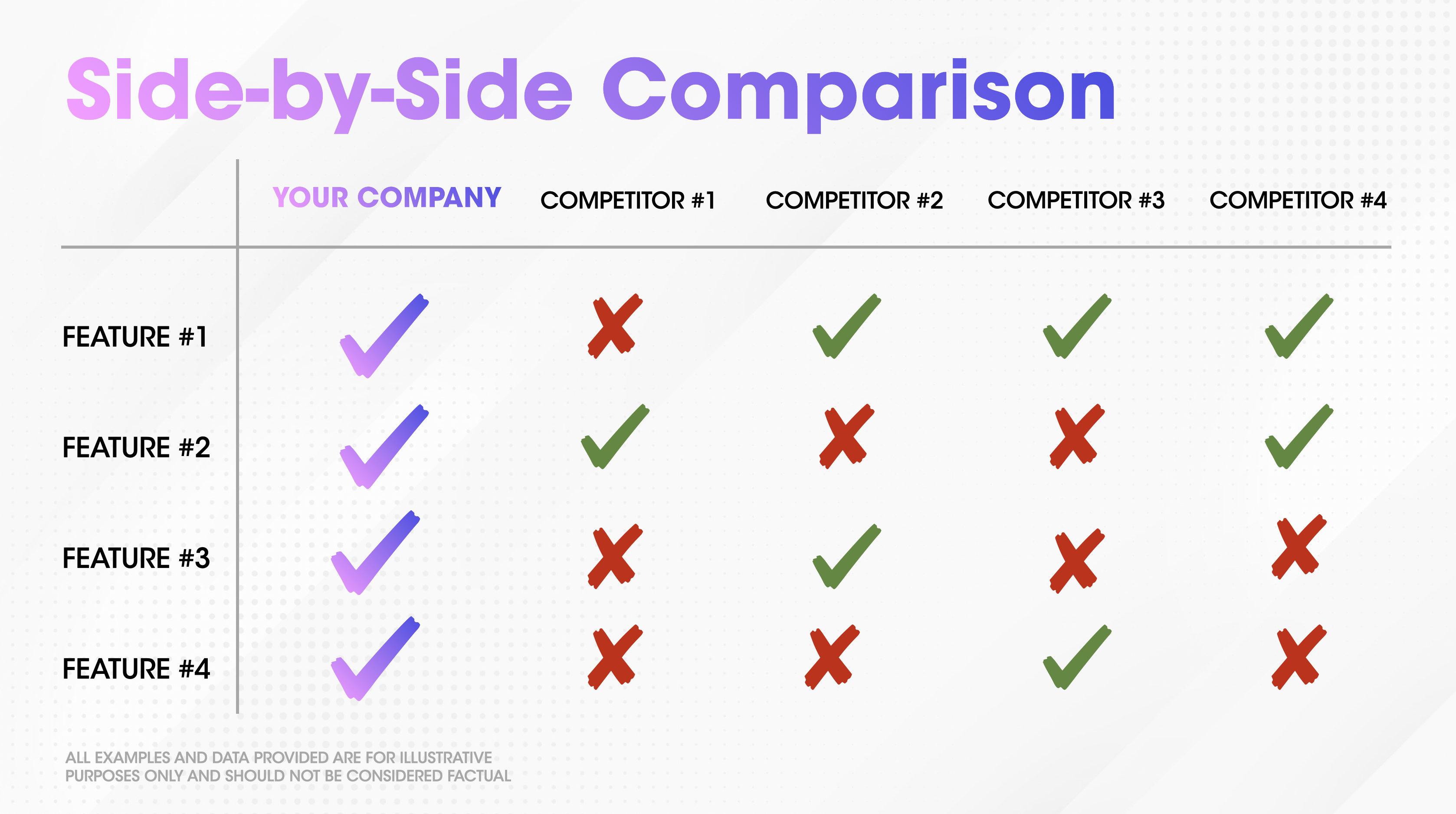This is part 11 of "The Ultimate Pitch Deck Guide for Startups," a fundraising guide made in partnership with DECKO, a leading pitch deck development company that’s helped ~180 startups raise over $100M from investors.
___________
Investors are keenly interested in how you perceive your competitive landscape and your ability to position yourself within it. One of the crucial sections in your investor pitch deck that can make or break your chances is the Competition or Alternatives Section. It's your opportunity to instill confidence and captivate investors by showcasing your strategy, market knowledge, and readiness to lead in the competitive startup landscape.
Your largest priorities for your Competition and Alternatives Section are:
- Demonstrating Market Realism: Investors want to know that you have a clear, realistic view of the market you're entering. The Competition Section is your opportunity to prove that you've done your homework. It shows that you've identified other players in your space, acknowledging that you're not operating in a vacuum. It's a testament to your market awareness.
- Positioning Your Startup: While your aim is not to convince investors that you're the sole player in your market, you do want to convey that you are the one best poised to lead it. The Competition Section allows you to showcase how your startup's strengths and unique value proposition set you apart from others. It's your chance to position your startup as the standout choice in a sea of options.
In this chapter of “The Ultimate Pitch Deck Guide for Startups,” we'll guide you on how to structure this section effectively and infuse it with the power to persuade investors to believe in your potential
Now, let’s dive in.
Identify Competition and Alternatives:
Understanding the difference between competition and alternatives is a fundamental step in crafting this section. Competition comprises companies offering similar products or solutions to your target customers.
Alternatives, on the other hand, encompass various behaviors or actions your customers might take to address their needs or problems. For example, Uber and Lyft compete directly for passengers, while customers can also choose alternatives like trains, bikes, or their own cars.
To create an effective Competition Section, you must identify and define your competitors and alternatives. Ask yourself: Are they pursuing the same customers as you, and do they offer similar products or solutions? By addressing these questions, you'll provide investors with a clear picture of your competitive landscape.
Using the Right Visual:
Visual aids can significantly enhance your Competition Section. There are two primary visual methods you can choose from: the Side-by-Side Comparison and the 2x2 Matrix.
- Side-by-Side Comparison: Ideal for startups operating in crowded markets with complex customer needs. Visualize this as a spreadsheet with your and your competitors' logos along the top, and key features your customers seek along the side. Highlight which features your company offers versus what your competitors provide.
- 2x2 Matrix: Suited for markets with diverse competitors and alternatives. Create four quadrants with positive qualities on the top and right, and negative qualities on the bottom and left. Position your company's logo in the top right quadrant to showcase your strengths.
Honing Your Fundamental Differentiators:
Regardless of the visual approach you choose, remember to emphasize your fundamental differentiators. Focus on what sets your startup apart from the competition and alternatives.
Don't get lost in differentiating in your process; concentrate on how your differences impact your customers and investors. Highlight key assets that deepen your competitive moat and explain how they lead to better outcomes.
Some examples of fundamental differentiators can be:
- Intellectual Property
- Deep customer relationships with a high cost of switching
- Network effects from your user, customer, or partner base
- Proprietary data that allows you to optimize your offering
By demonstrating a clear understanding of your market, competitors, and alternatives, and by using the right visual aids, you can instill confidence in potential investors. Remember to hone your fundamental differentiators to showcase how your startup is poised to lead the market.
That wraps up this week’s chapter. Check back next week when we discuss your company’s financials and projections.











